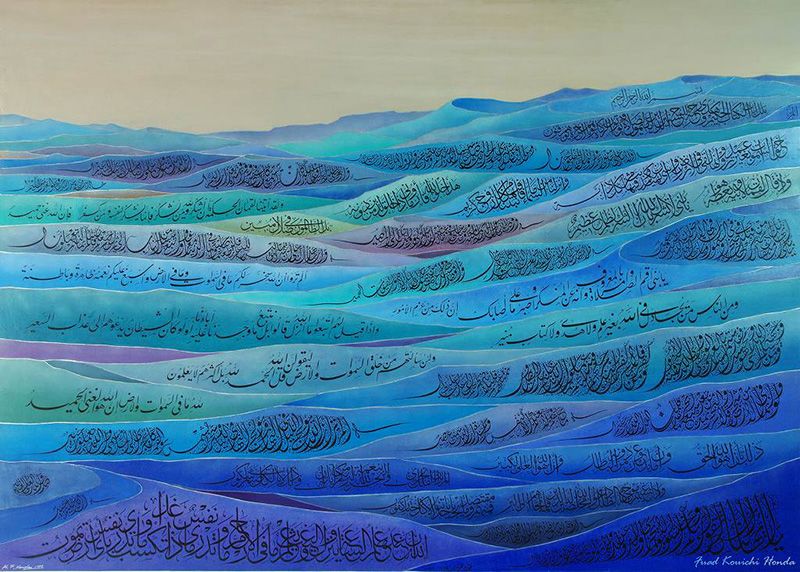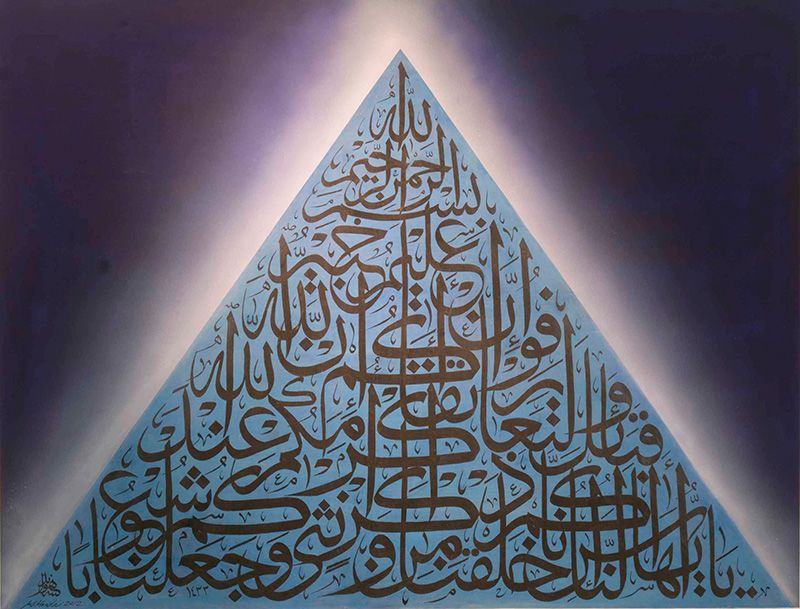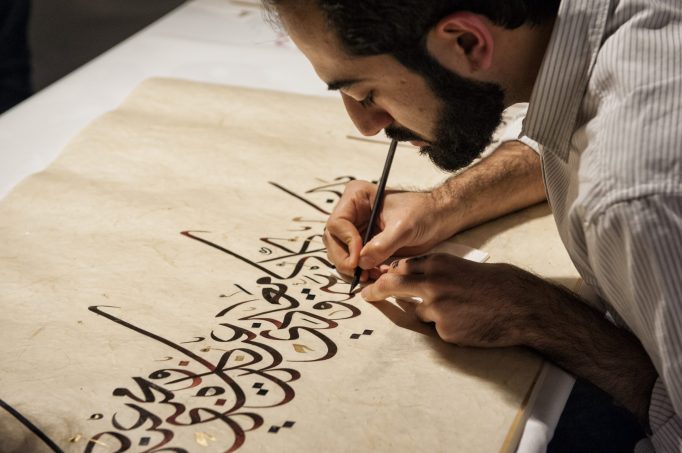UNESCO has added Arabic calligraphy to the list of the Intangible Cultural Heritage of Humanity. It was suggested by a coalition of 16 Arabic-speaking countries, including Saudi Arabia, Egypt, Jordan, and Palestine. The countries will create a report on their progress in supporting the arts next year.
The proposal was led by Saudi Arabia, which declared 2020 and 2021 the “Years of Arabic Calligraphy”. This included the ambition to include Arabic calligraphy on the UNESCO list.
In a statement released by the Saudi government, Prince Badr bin Abdullah bin Farhan, the country’s Minister of Culture, said: “We applaud the inscription in Arabic calligraphy, which is the result of the Kingdom standing up for this valuable aspect of authentic Arabic culture.”
The UNESCO statement describes Arabic calligraphy as the artistic practice of writing handwritten Arabic scripts in a fluid manner to convey harmony, grace, and beauty. Originally invented to improve the legibility of the Arabic script, the writing form became more complex as artists discovered that by shaping the letters in different ways, they could create unique motifs.

The form of Arabic calligraphy continued to evolve as artists used a variety of mediums to create calligraphy, including honey, black carbon, saffron, and even spray paint. Unlike UNESCO World Heritage Sites, which are physical in nature, intangible cultural heritage refers to valuable cultural practices. Games, hunting customs, dialects, culinary treasures, and folk dances are included along with the more modern cultural heritage of humanity.
In Singapore, for example, street vendor food made the list in 2020 as a repository not only of food practices but of the community cohesion that these outdoor food courts create in urban spaces. A coalition of 16 Arabic-speaking countries also successfully lobbied to add falconry to the list this year.
Arabic calligraphy has received particular development in Islamic culture due to the existing ban on the image of Allah, the Prophet Muhammad and living beings in general (the so-called aniconism). The art of Arabic calligraphy is especially revered in the Muslim world, being a means of preserving and disseminating the “divine message” contained in the Koran.
The art of Arabic calligraphy is associated with Arabic decoration, which is used to decorate mosques and palaces. It is also used in the desalination of manuscripts and books, especially copies of the Holy Koran.
Honda Koichi, master of Arabic calligraphy


The art of Arabic calligraphy, which emerged from the desire to convey the words of the Koran in the most beautiful way, has developed over more than a thousand years and has reached amazing perfection. Picasso was once captivated by the beauty of Arabic calligraphy. And in our century in Japan, there is a master who managed not only to perfectly master this ancient art but also to introduce new features into it.
Honda Koichi is a chairman of the Arabic Calligraphy Society in Japan, Professor at the Faculty of International Relations at Daito Bunka University. His Blue Pyramid, directed to the heavens, radiates a white glow. Upon closer examination of the ornament that adorns the pyramid, we see that this is an Arabic calligraphic. A fragment of text from the Koran begins in the lower right corner, fills the entire surface of the pyramid, and the word “Allah” is written on top of it.
This artwork, titled Prayer Pyramid, was created by Arabic calligrapher Honda Koichi. Some of his works are even kept in the British Museum, that is, they are highly valued not only in Islamic countries but throughout the world.
Initially, Arabic writing was created to record the Koran. For more than a thousand years, they have honed every line in order to most beautifully convey the words of God. On closer examination, it turns out that the construction of parts of signs is based on the golden section. Pablo Picasso said about Arabic calligraphy: “It has already almost reached the ultimate goal of art.”
It embodied the absolute beauty that Western art aspires to. The lines of this letter, built according to the golden ratio, are aesthetically perfect.

























